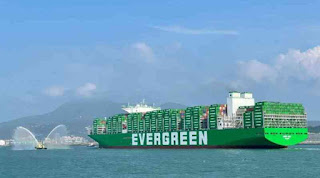Surviving entry into a foreign country
The plane came to a stop and the seatbelt signed pinged and
switched off. It was if it signalled the start of a race or the commencement of
a rugby scrum! People pushed and shoved, climbed over seated persons to reach
the aisle, and establish a place in a queue for a cabin door that was not even
open! Overhead bin doors flew open and without any regard to people below
dragged out their luggage and forced a place in the queue for it. If their
baggage was not adjacent to their seat, they pushed past with the determination
of a scrum forward without apology or concern for others. What is it in us that
brings out this behaviour?
Having checked in baggage I knew there was no need to rush
so sat back and enjoyed the debacle of sensible people reduced to a rabble in
their urge to leave the plane.
The door opened and the pushing started but also a sense of
decency returned as people waited for others to rise and exit their seats. Soon
the pace of exit reduced to a trickle, and we rose, collected our bags, checked
we had not left anything in the seat pockets and left, thanking the air
hostesses for their service.
Outside the aircraft there were a couple of guys just
watching us as we went up the ramp. They were in civilian clothes, and it
looked as though they were customs or immigration checking us out!
Came to the top of the ramp and then came the information
overload. Signs for everything in all directions! Stopped, got bumped by
passengers behind me as they raced for the exit but finally deciphered the two
most important signs we needed, baggage reclaims and toilets! Then started a
long walk with escalators and left and right turns until we came to a large
sign that read “You are now entering the UK border control area! More
intimidating than welcoming. More signs separating Europeans from
non-Europeans, so we chose the queue for Europeans and prepared ourselves for
the automatic electronic scan system with my passport. Chose my UK passport and
stepped onto the yellow footprints on the floor, removed my cap and inserted my
passport into the scanner. No response as I waited and waited. Reread the instructions
and began to panic thinking of all the people behind me in the queue getting
impatient. Still no response from the machine. In desperation I turned the
passport upside down and bingo it worked, and a picture of my face was taken
and the gate to the UK opened.
One down 2 to go.
The baggage hall was enormous, and an overhead screen
announced that our baggage would arrive on belt two. Dutifully checked the belt
signs and walked down the hall. The belt was stationery and the overhead sign
said last bag on the belt for passengers from Stockholm. A guy removed all the
last remaining bags and there began the scrum to be nearest to the chute
ejecting the bags onto the belt. Never mind the yellow safety lines just get
close to the belt seemed to be the objective. Having learnt the folly of such a
move I went to the other end of the belt were there were less people. Suddenly
a light came on over the belt and a bell sounded and everyone became agitated,
the bags are coming and so they did. Everything from large well wrapped
packages to rucksacks and suitcases that had not survived the baggage handlers
and were disgorging their contents on the belt!
Round and round went the bags, saw that red one last time
round, where is my small black suitcase with a red address label? There it is,
so excused myself and got to the front and extracted the suitcase.
Now for the next hurdle, customs. Choose the green channel
passing two nonchalant customs officers leaning against the wall with their
eyes everywhere. I wonder what they are looking for. Passed by the inspection
area and could not help a peep into it and sure enough there was a family with
large suitcases having to unpack them for inspection.
A sliding door opened, and we had entered the UK and it was
complete chaos. People lined up against a barrier with name tags or just
searching for faces, happy reunions and business people being rushed away to
their booked transport.
Again information overload and we scanned for car rentals
and followed the signs. More confusion as we must take a lift down to the next
level. Remembered where the car rental office was and headed for it only to
find it was a building site and we were redirected to the multistorey carpark
second level.
There we were met by a friendly attendant who led us to our
little Fiat 500 and after checking it for damage we were off or were we. How do
we get out of this place!












